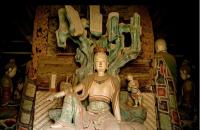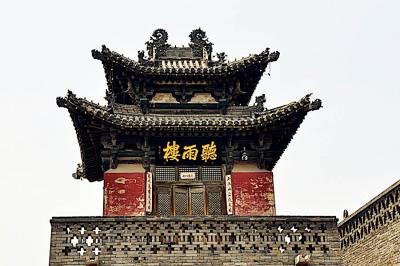Zhenguo Temple
 Located 10 km away from Pingyao in the village of Hadongcun, Zhenguo Temple is an important part of world heritage and a major historic and cultural site in Pingyao. Covering an area of 13,000 square kilometers, with 5,000 square kilometers of ancient architectures, this temple was first built in 963 in the Northern Han Dynasty and renovated in 1816 during the Qing Dynasty.
Located 10 km away from Pingyao in the village of Hadongcun, Zhenguo Temple is an important part of world heritage and a major historic and cultural site in Pingyao. Covering an area of 13,000 square kilometers, with 5,000 square kilometers of ancient architectures, this temple was first built in 963 in the Northern Han Dynasty and renovated in 1816 during the Qing Dynasty.With two courtyards in between the three buildings, the temple consists of distinct front sections, back sections and a gate. The temple opens to the south, with the Tianwang Hall acting as the temple's gate. The next hall, to the north, is the Wanfo Hall, and the final hall is called Sanfo Hall, which dates from the Qing Dynasty. The northern courtyard also features two minor halls facing to the east and west called the Guanyin and Dizang Halls, which both date from the Ming Dynasty. The most important hall in the temple is Wanfo Hall, one of China's oldest wooden buildings. It is a three-bay single-eaves hip and gabled hall that is nearly square in shape, measures 11.6 by 10.8 meters, and is 8.8 m high. Built in 963 during the Northern Han dynasty, Wanfo Hall is notable for featuring very large brackets that hold up the roof and flying eaves. The contemporary sculptures inside the hall are among the only examples of 10th century Buddhist sculpture in China.
The hall contains eleven sculptures from the Northern Han period. These painted sculptures are valuable in terms of archaeology. There is a main statue of Sakyamuni flanked by Bodhisattvas and the Heavenly Kings. On its sides are the sculptures of his apprentices along with other gods. All of these sculptures have different facial expressions and shapes. There are another two scenic spots especially worth a look in the temple. One is the half stele of the Northern Han Dynasty. Another one is the 1,000-year old dragon scholar tree, which remains lush and green.


